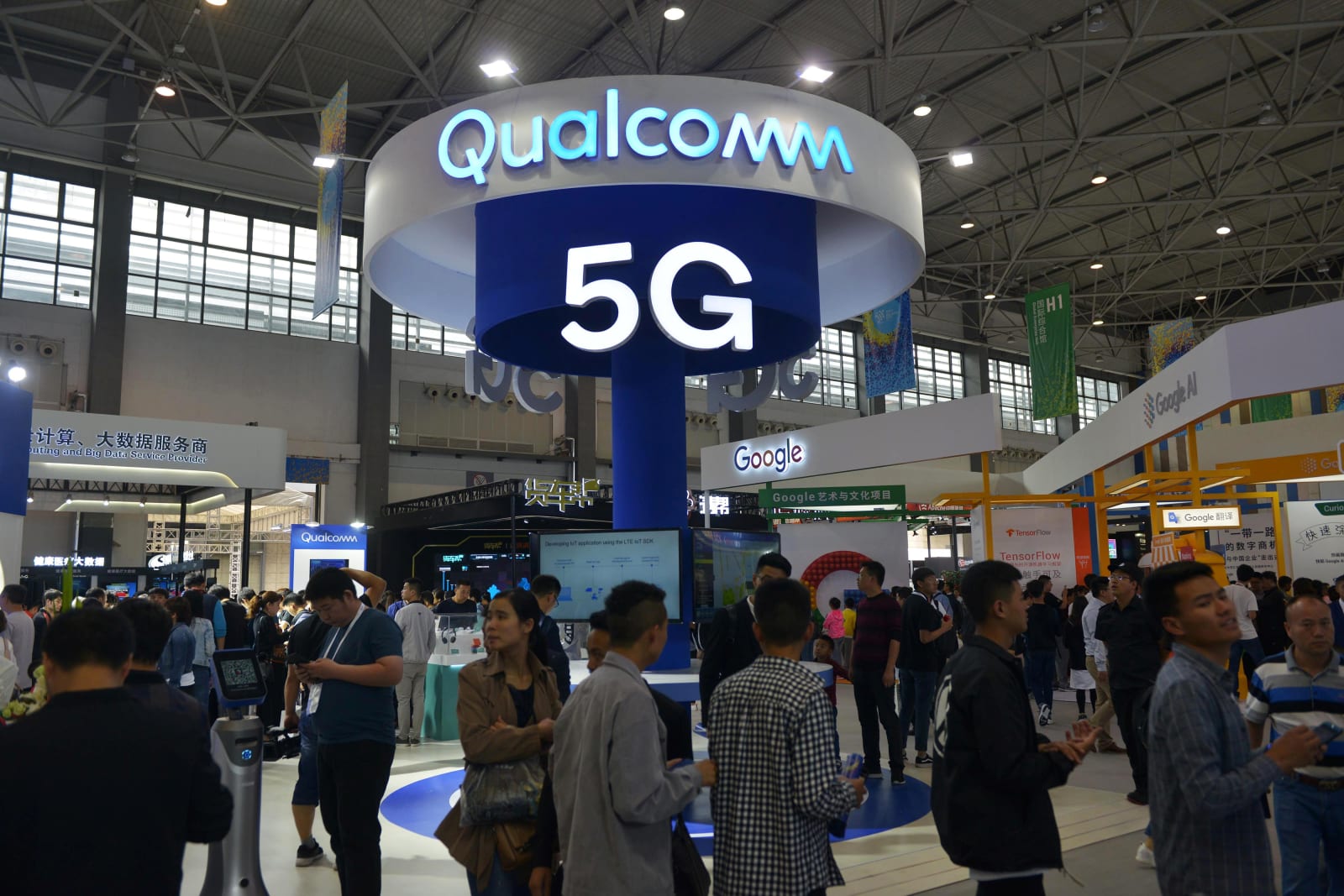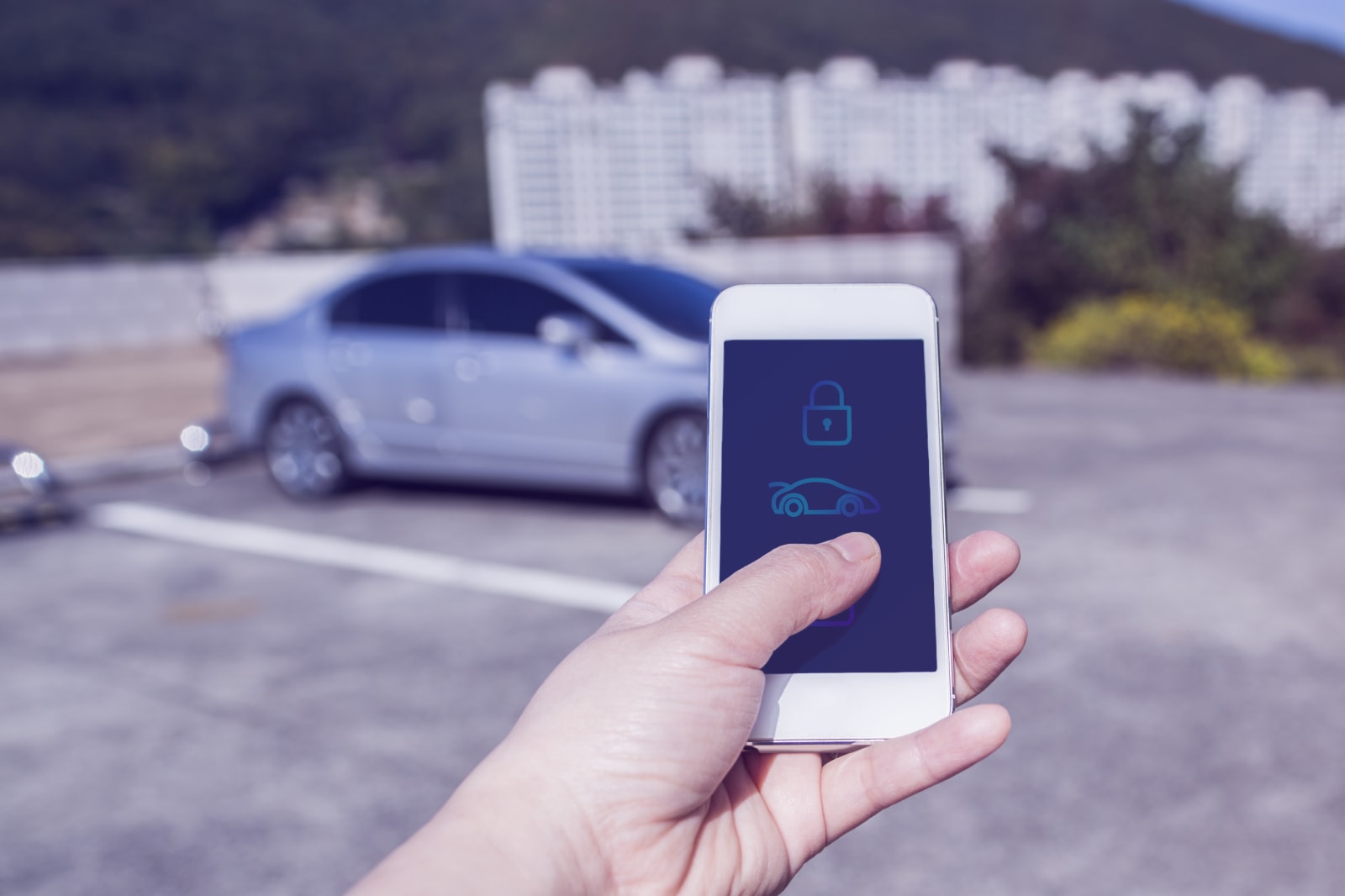Tag Archives: NXP
Qualcomm gives up on buying chip giant NXP
 Qualcomm has been trying to buy giant chip maker NXP for the better part of two years. All that patience might not have paid off, however. Qualcomm is planning to drop its bid for NXP by the end of July 25th (that's today, if you're reading in time)....
Qualcomm has been trying to buy giant chip maker NXP for the better part of two years. All that patience might not have paid off, however. Qualcomm is planning to drop its bid for NXP by the end of July 25th (that's today, if you're reading in time)....
‘Digital Key’ standard uses your phone to unlock your car
 You can already use your smartphone as a car key if you own the right vehicle (just ask Tesla Model 3 owners). There hasn't really been a common standard for it, though, and that has hurt adoption -- you can't guarantee that you'll have phone access...
You can already use your smartphone as a car key if you own the right vehicle (just ask Tesla Model 3 owners). There hasn't really been a common standard for it, though, and that has hurt adoption -- you can't guarantee that you'll have phone access...
Qualcomm just announced the biggest chip acquisition ever
 The smartphone world is starting to slow, and the companies that make the chips that go inside them are teaming up to stave off dwindling profits. Perhaps that's why Qualcomm today announced that it's picking up NXP Semiconductor for $47 billion, in...
The smartphone world is starting to slow, and the companies that make the chips that go inside them are teaming up to stave off dwindling profits. Perhaps that's why Qualcomm today announced that it's picking up NXP Semiconductor for $47 billion, in...
Modded Nexus 7 shows why some phone and tablet loudspeakers are better than others (video)
We never used to take the speakers in phones or tablets very seriously. Frankly, we're not sure manufacturers did either. But the old assumption that tiny = tinny is starting to seem a bit unfair. Last year, Dutch chip-maker NXP released a new type of mobile audio component -- the TFA9887 -- that allowed a mobile device to monitor its speaker system in real-time in order to max out volume without risking damage to the driver. Although NXP is way too modest to confirm it, we happen to know that this chip made its way into a number of HTC devices, including the new One, One X+ and 8X, where it's been described as "feedback" speaker technology.
The extra voltage delivered to speakers by this generation of component hasn't been especially wild -- just a couple of volts above the industry norm of around 3V. But what you're about to hear after the break is the next-gen TFA9890, which is expected to appear in devices around the middle of this year, and which racks things all the way up to 9.5V. This promises to be a much more audible leap relative to traditional no-feedback speaker systems, and you should be able to spot the difference for yourself after the break.
Filed under: Cellphones, Laptops, Tablets, Mobile
NXP’s silicon fingerprinting promises to annoy the heck out of ID hackers
It's 2013 and white hat hackers like Adam Laurie are still breaking into ID chips that are supposed to be secure. How come? Partly it's the way of the world, because no man-made NFC or RFID security barrier can ever be truly impervious. But in practical terms, a chip's vulnerability often stems from the fact that it can be taken apart and probed at a hacker's leisure. The secure element doesn't necessarily need to have power running through it or to be in the midst of near-field communication in order to yield up its cryptographic key to a clever intruder who has sufficient time and sufficient desire to breach the security of a smartphone, bank card or national border.
Which brings us to the latest device in NXP's SmartMX2 range -- a piece of technology that is claimed to work very differently and that is expected to hit the market next year. Instead of a traditional key stored in the secure element's memory, every single copy of this chip carries a unique fingerprint within the physical structure of its transistors. This fingerprint (aka Physically Unclonable Function, or PUF) is a byproduct of tiny errors in the fabrication process -- something chip makers usually try to minimize. But NXP has found a way to amplify these flaws in a controlled way and use them for identification, and it'd take a mightily well-equipped criminal (or fare dodger, or Scrabble cheater) to reverse engineer that.
Cisco and NXP invest in Cohda, will work together to enable connected car
More than a year after NXP Semiconductors worked with Cohda Wireless to hook up cars via 802.11p, the chip maker has decided to invest in its partner with a little help from Uncle Cisco. While the PR is mum on the exact amount, the investment is apparently significant enough that all three companies are set to work together. Cohda's wireless knowhow, NXP's semiconductor chops and Cisco's vast infrastructure would join forces -- á la Voltron -- to help usher in the era of the connected car. By enabling car-to-car (C2C) and car-to-infrastructure (C2I) communications, drivers could avoid hazards, evade bad traffic and even form "trains" of vehicles on the road like what Volvo's demonstrated with its SARTRE project. No word on a timeline for when we'll see this on public roads, but automotive-qualified IEEE 802.11p products are said to be one of the trio's first goals, so hopefully it'll be sooner rather than later.
[Image credit: Creativity103, Flickr]
Continue reading Cisco and NXP invest in Cohda, will work together to enable connected car
Filed under: Transportation
Source: NXP
GreenWave Reality ships WiFi-aware light bulbs that flick on through motion and smartphones
 We've seen connected light bulbs before, some more sophisticated than others, but they're rarely as straightforward as GreenWave Reality's just-shipping Connected Lighting Solution. Eco-friendly LED bulbs in the lineup include support for WiFi and are immediately controllable from a smartphone or tablet as soon as they're receiving power. Basics controls like group presets and timed lighting are just the start; if you're not worried about leaving anyone in the dark, the bulbs can respond to motion sensors and only illuminate the rooms that need attention. And while the intelligence isn't new in itself, GreenWave would argue that sheer accessibility gives it an edge, with electric utilities in Denmark, the Netherlands and Sweden skipping the retail middleman by selling directly. Don't despair if you live in the US: the linked-up lighting is cleared for eventual use by Americans who'd like to save both energy and a trip to the light switch.
We've seen connected light bulbs before, some more sophisticated than others, but they're rarely as straightforward as GreenWave Reality's just-shipping Connected Lighting Solution. Eco-friendly LED bulbs in the lineup include support for WiFi and are immediately controllable from a smartphone or tablet as soon as they're receiving power. Basics controls like group presets and timed lighting are just the start; if you're not worried about leaving anyone in the dark, the bulbs can respond to motion sensors and only illuminate the rooms that need attention. And while the intelligence isn't new in itself, GreenWave would argue that sheer accessibility gives it an edge, with electric utilities in Denmark, the Netherlands and Sweden skipping the retail middleman by selling directly. Don't despair if you live in the US: the linked-up lighting is cleared for eventual use by Americans who'd like to save both energy and a trip to the light switch.
Filed under: Household
GreenWave Reality ships WiFi-aware light bulbs that flick on through motion and smartphones originally appeared on Engadget on Mon, 22 Oct 2012 08:00:00 EDT. Please see our terms for use of feeds.
Permalink | GreenWave Reality | Email this | Comments
GreenWave Reality | Email this | Comments NXP’s new audio chip pumps up the volume for mobile device speakers (update: video)
Dutch company NXP -- best known for it's NFC solutions -- introduced a new audio chip today that's set to significantly improve the sound quality of the micro-speakers commonly built into mobile devices such as smartphones and tablets. The TFA9887 integrated circuit combines NXP's CoolFlux audio DSP, a class-D amplifier with current sensing and a DC-to-DC converter to boost the output level of micro-speakers up to five times (up to 2.6W RMS) without damaging the driver. Class-D amplifiers are highly efficient and, when combined with a DC-to-DC converter, provide a strong and clear signal regardless of battery level. With current sensing, the chip uses feedback from the driver to optimize power delivery, allowing micro speakers to provide louder, richer sound with deeper, tighter bass over the entire lifetime of a mobile device. Are you ready to turn it up to 11? Check out the full PR after the break.
Update: Hit the break for NXP's PR video.
Continue reading NXP's new audio chip pumps up the volume for mobile device speakers (update: video)
Filed under: Cellphones, Tablet PCs
NXP's new audio chip pumps up the volume for mobile device speakers (update: video) originally appeared on Engadget on Tue, 17 Jul 2012 08:00:00 EDT. Please see our terms for use of feeds.
Permalink | NXP | Email this | Comments
NXP | Email this | Comments 


